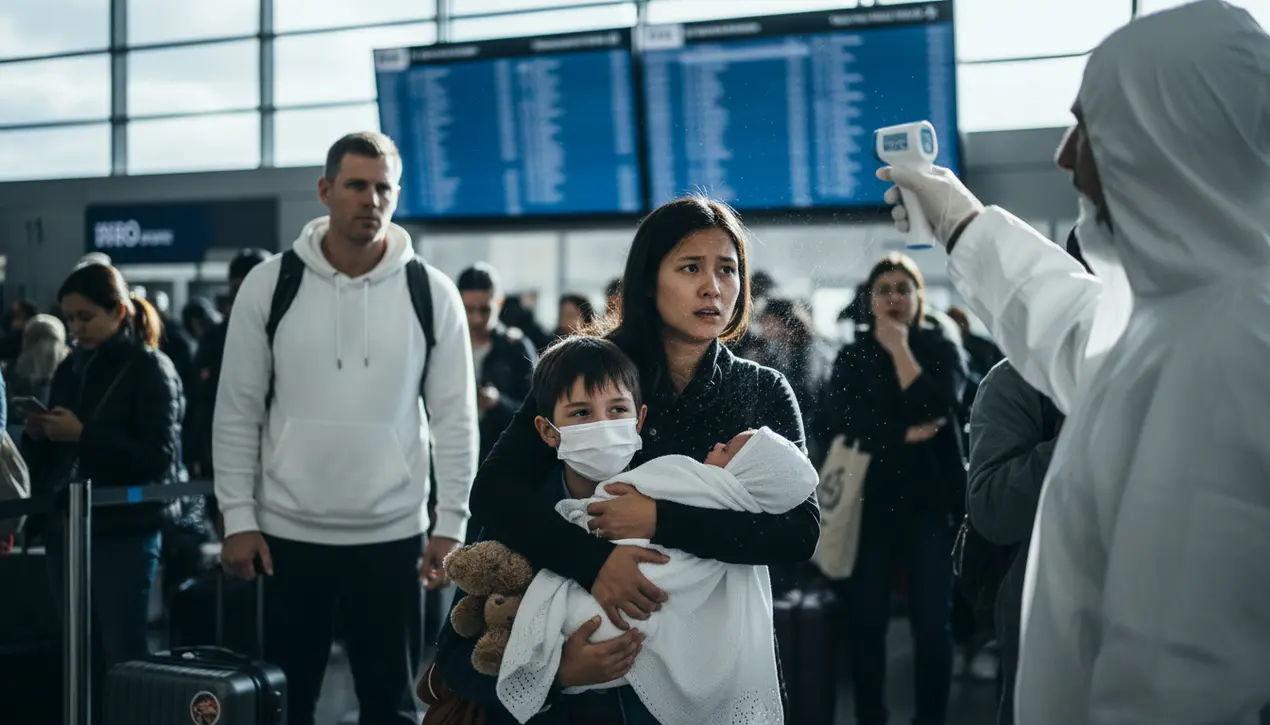
SciencemedicinePublic Health
CDC: US 2 months from losing measles elimination status.
OL
Oliver Scott
2 hours ago7 min read1 comments
The United States stands on the precipice of a significant public health regression, with the Centers for Disease Control and Prevention signaling we are merely two months away from forfeiting our hard-won measles elimination status. This status, a designation confirming the absence of continuous disease transmission for at least 12 months, is not merely a bureaucratic trophy; it is a testament to decades of rigorous vaccination campaigns and epidemiological vigilance.The potential loss of this status, a scenario now looming with tangible probability, represents a profound systemic failure, a cascading risk event born from the combustible mix of declining vaccination rates, heightened global travel, and the virulent nature of the measles virus itself. Measles is not a benign childhood illness; it is one of the most contagious pathogens known to science, with an R0 (basic reproduction number) between 12 and 18, meaning a single case can spawn a cluster of 12 to 18 others in a susceptible population.The virus can linger in the airspace of a room for up to two hours after an infected person has left, a characteristic that has fueled outbreaks in airports, schools, and healthcare facilities. The original declaration of measles elimination in the U.S. in 2000 was a monumental achievement, built on the backbone of the safe and highly effective MMR (measles, mumps, rubella) vaccine.Its potential revocation forces a stark risk assessment: what are the cascading consequences? Beyond the immediate strain on pediatric ICUs and the tragic, preventable deaths, we must model the secondary shocks. A sustained measles outbreak diverts immense resources from other public health priorities, including cancer screenings and chronic disease management.It exposes vulnerabilities in our public health infrastructure that could be exploited by a more severe pathogen, a dry run for a pandemic we failed. The current outbreaks, scattered like smoldering embers across multiple states, are not random events; they are the predictable outcome of vaccination coverage dipping below the 95% threshold required for herd immunity.This decline is not uniform, creating pockets of extreme vulnerability—geographic clusters where philosophical or religious exemptions have created a tinderbox. From a risk analysis perspective, the situation mirrors other complex system failures where multiple small, seemingly manageable breaches converge into a catastrophic collapse.The geopolitical dimension cannot be ignored; other nations with robust vaccination programs will likely impose travel advisories or restrictions on U. S.citizens, impacting tourism and business. The economic cost of containment—contact tracing, quarantine enforcement, and medical treatment—runs into the millions for a single, sizable outbreak.Expert commentary from epidemiologists like Dr. Saad Omer of Yale and risk modelers at institutions like Johns Hopkins points to a troubling new normal, where once-vanquished diseases become recurring seasonal threats, eroding public trust and straining governmental credibility. The clock is ticking, and the scenario we are facing is not one of mere statistical reclassification, but a tangible step backward in the nation's health security, a warning flare signaling the fragility of our defenses in an interconnected world.
#measles
#CDC
#elimination status
#outbreak
#public health
#featured
Stay Informed. Act Smarter.
Get weekly highlights, major headlines, and expert insights — then put your knowledge to work in our live prediction markets.
Related News
Comments
Loading comments...
© 2025 Outpoll Service LTD. All rights reserved.